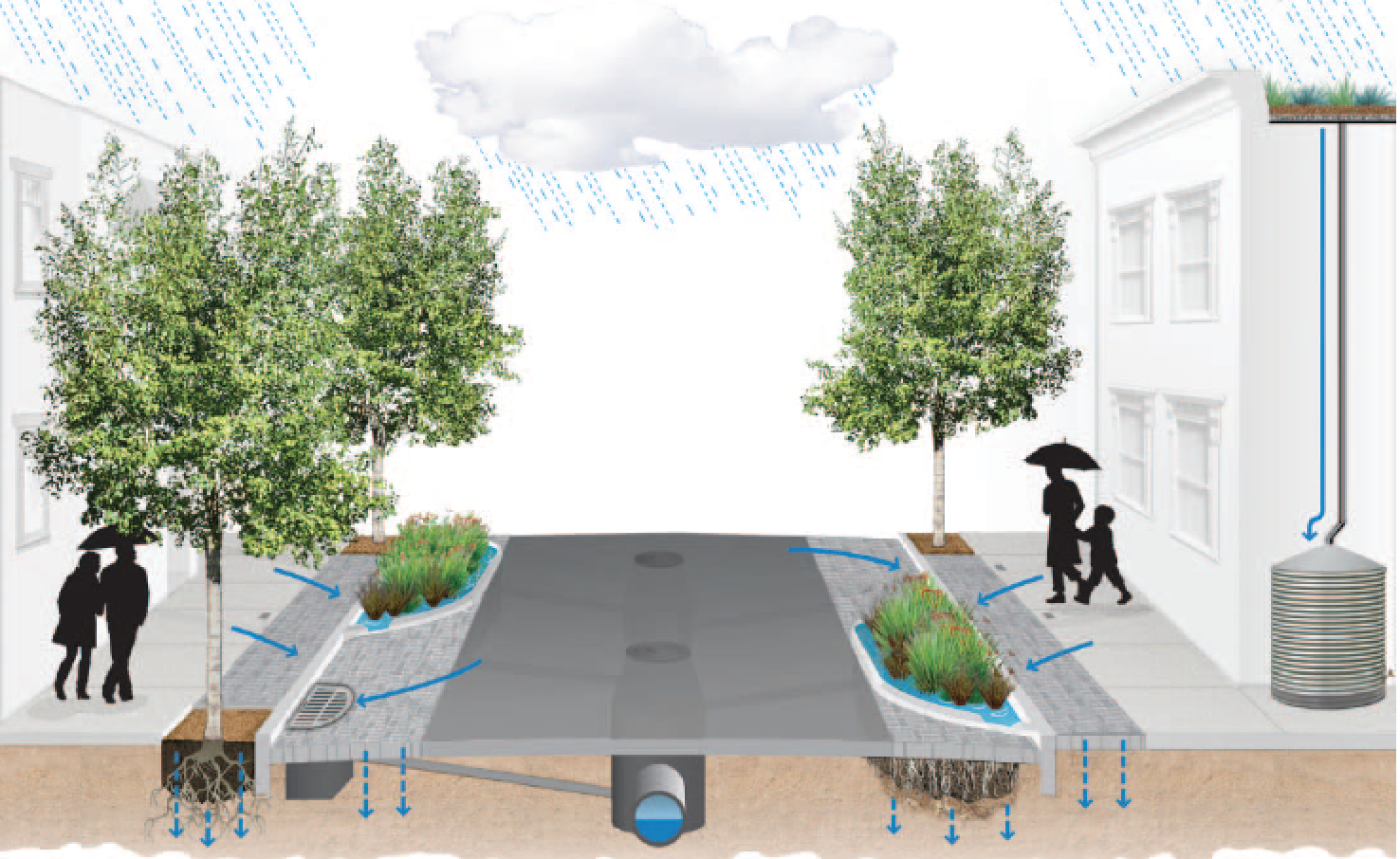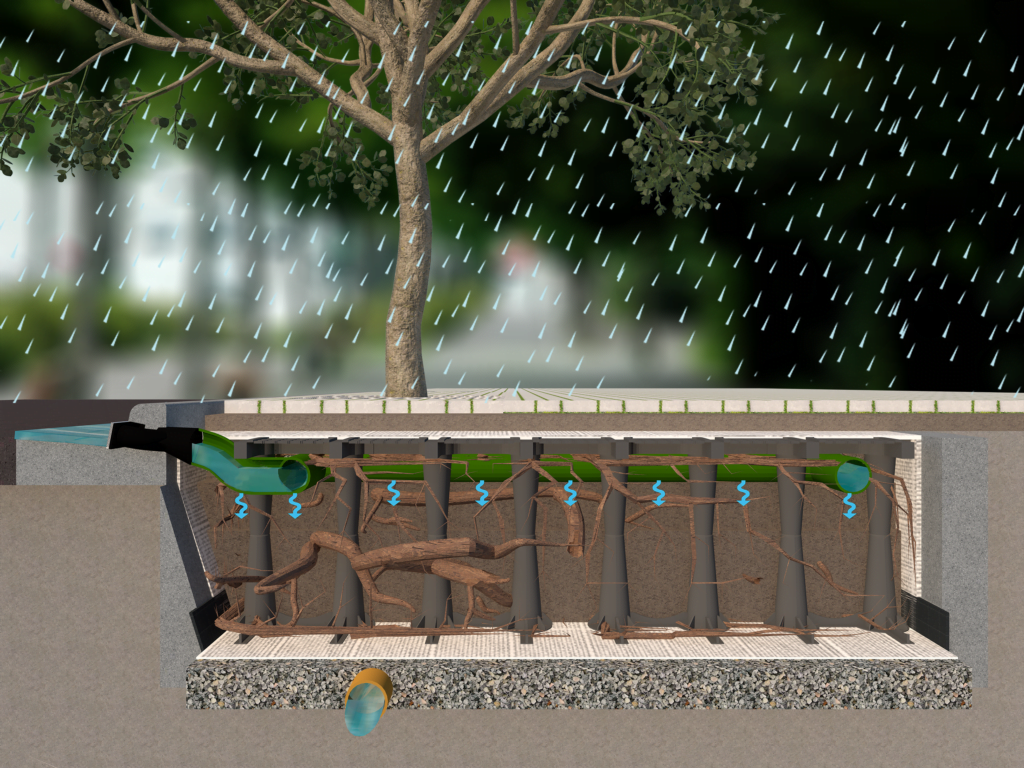Water-sensitive urban design and architecture
Water-sensitive urban design (WSUD) and architecture are approaches that prioritize sustainable water management in the planning and development of urban areas. By integrating water-sensitive strategies, architects and urban planners can enhance water efficiency, reduce environmental impact, and create resilient, eco-friendly urban environments. Here’s an in-depth look at the principles and benefits of WSUD.
1. Understanding Water-Sensitive Urban Design (WSUD)
Definition:
- Concept: WSUD involves the integration of water management into urban planning and design, aiming to minimize the impact on the natural water cycle and enhance the resilience of urban areas to water-related issues.
- Objective: The primary goal is to manage the urban water cycle sustainably by incorporating strategies for water conservation, quality improvement, and flood management.
2. Principles of WSUD
Sustainable Water Management:
- Water Efficiency: Implementing measures to reduce water consumption through efficient fixtures, leak detection systems, and water-saving appliances.
- Water Harvesting and Reuse: Collecting and reusing rainwater and greywater for non-potable uses, such as irrigation and toilet flushing.
Stormwater Management:
- Permeable Surfaces: Using permeable paving materials to allow water infiltration and reduce surface runoff.
- Green Infrastructure: Integrating green roofs, rain gardens, and bioswales to manage stormwater naturally and enhance urban biodiversity.

3. Strategies for Water-Sensitive Architecture
Green Roofs and Walls:
- Benefits: Green roofs and walls absorb rainwater, reduce runoff, improve insulation, and enhance aesthetic appeal.
- Design: Incorporating vegetation-covered surfaces into building designs to manage water sustainably and provide additional green space.
Rainwater Harvesting Systems:
- Collection: Installing systems to capture rainwater from roofs and other surfaces.
- Storage and Reuse: Using stored rainwater for landscaping, flushing toilets, and other non-potable applications.
4. Urban Planning for WSUD
Integrated Water Management:
- Holistic Approach: Combining water management strategies with urban planning to address water supply, stormwater, and wastewater in a coordinated manner.
- Collaboration: Engaging stakeholders, including local governments, communities, and developers, to ensure comprehensive water-sensitive solutions.
Resilient Urban Landscapes:
- Flood Mitigation: Designing urban landscapes to manage excess water during heavy rains and prevent flooding.
- Ecosystem Services: Creating green spaces that provide ecological benefits, such as improved air quality, habitat creation, and climate regulation.
5. Case Studies and Real-World Applications
Exemplary Projects:
- Singapore’s Bishan-Ang Mo Kio Park: A transformed urban park that integrates naturalized waterways and flood management features.
- Portland’s Green Streets: A network of streets with green infrastructure to manage stormwater, reduce runoff, and enhance urban greenery.
6. Benefits of WSUD
Environmental Benefits:
- Water Conservation: Reducing the demand on potable water supplies through efficient use and reuse practices.
- Water Quality Improvement: Filtering pollutants and improving the quality of urban runoff before it enters natural water bodies.
Social and Economic Benefits:
- Enhanced Livability: Creating greener, more attractive urban environments that improve residents’ quality of life.
- Cost Savings: Reducing the costs associated with water treatment, flood damage, and infrastructure maintenance.
7. Future Trends in WSUD
Smart Water Management:
- Technology Integration: Utilizing smart sensors and data analytics to optimize water use and management in real-time.
- Adaptive Systems: Developing adaptive water management systems that respond to changing environmental conditions and urban demands.
Policy and Regulation:
- Supportive Policies: Advocating for policies and regulations that promote the adoption of WSUD principles in urban development.
- Incentives: Providing incentives for developers and property owners to implement water-sensitive designs and technologies.
Conclusion
Water-sensitive urban design and architecture offer sustainable solutions for managing the urban water cycle, enhancing environmental resilience, and improving the quality of urban life. By integrating WSUD principles into urban planning and building design, cities can create more sustainable, eco-friendly, and livable environments. As the challenges of climate change and urbanization continue to grow, WSUD will play a crucial role in shaping the future of sustainable urban development.



